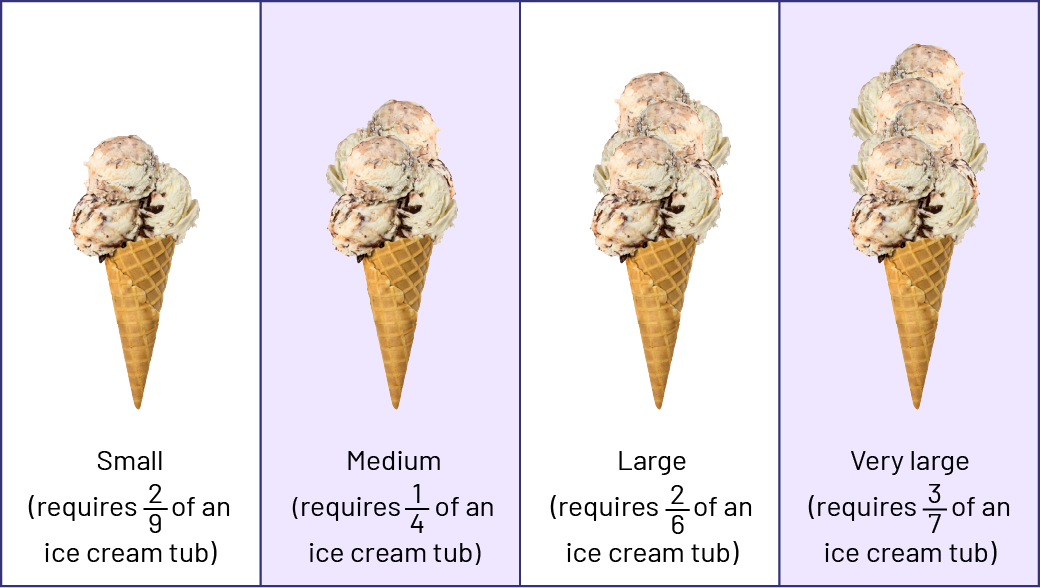B2.10 Divide whole numbers by proper fractions, using appropriate tools and strategies.
Activity 1: Division Problems
First Problem
Annick has four oranges. She gives each of her friends \(\frac{2}{3}\) of an orange. How many friends get a piece of orange?
(\(4 \div \frac{2}{3}\))
Second Problem
In relay races, the distance to be covered is 3 km. Each member of the team run \(\frac{2}{6}\) of the full distance. How many team members must be on the team?
(\(3\; \div \;\frac{2}{6}\))
Source: Adapted and translated from Les mathématiques... un peu, beaucoup, à la folie!, Guide pédagogique, Édition révisée, Numération et sens du nombre, 6e, Module 2, Série 2, p. 295.
Ask students questions such as:
- What strategies can be used to solve problems? What tools can be used? Justify your answer.
- How could the same situation be represented by multiplication? How do you know?
Ask students to compare their strategies with each other. Identify similarities and differences between the various strategies.
Activity 2: Visit to the Village Dairy!
Benjamin is making ice cream cones. Each size of cone requires a different amount of ice cream.

Ask students questions such as:
- How many small cones could he make if he had 6 tubs of ice cream? 2 tubs of ice cream? 8 tubs of ice cream? How do you know?
- How many medium cones could he make if he had 6 tubs of ice cream? 2 tubs of ice cream? 8 tubs of ice cream? How do you know?
- How many large cones could he make if he had 6 tubs of ice cream? 2 tubs of ice cream? 8 tubs of ice cream? How do you know?
- How many very large cones could he make if he had 6 tubs of ice cream? 3 tubs of ice cream? 9 tubs of ice cream? How do you know?
- What strategies or tools could be used to solve the problems? Justify your choice.
- How could the problems be represented using multiplication? Explain your reasoning.
